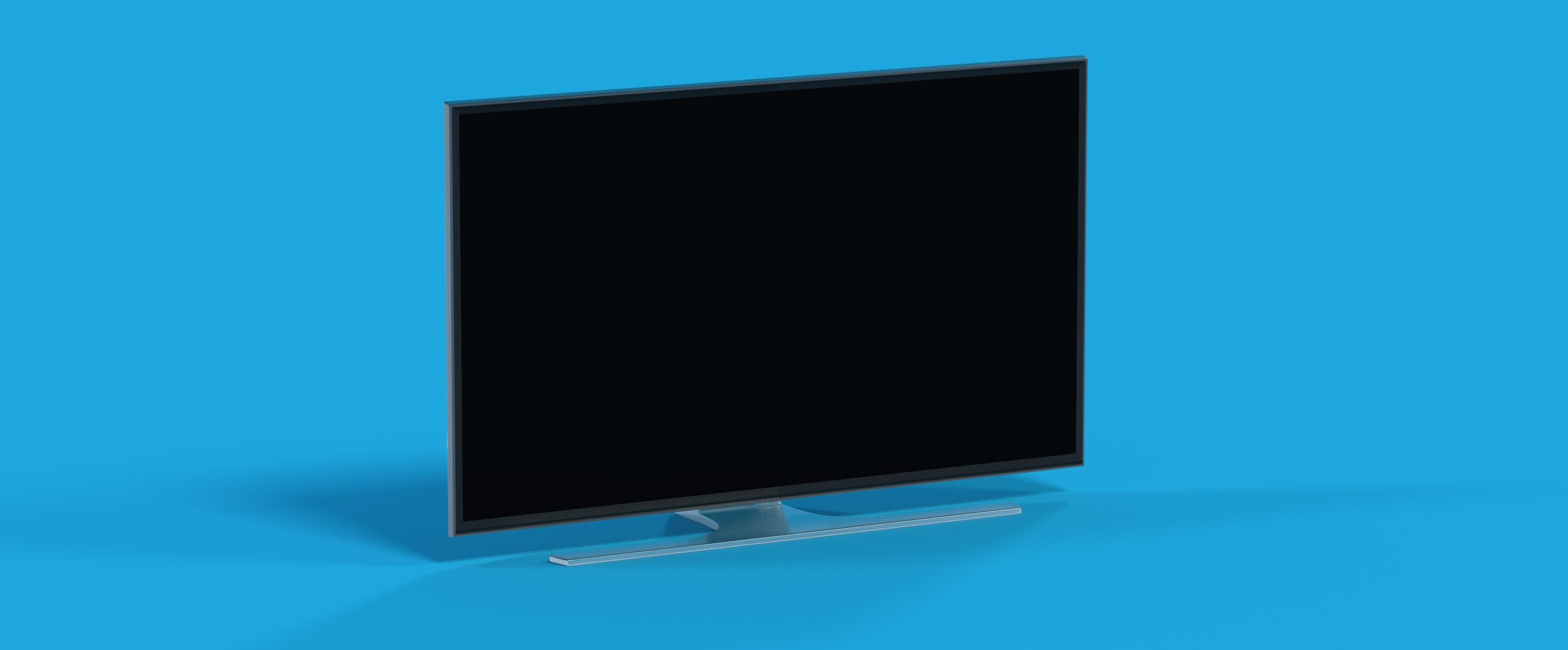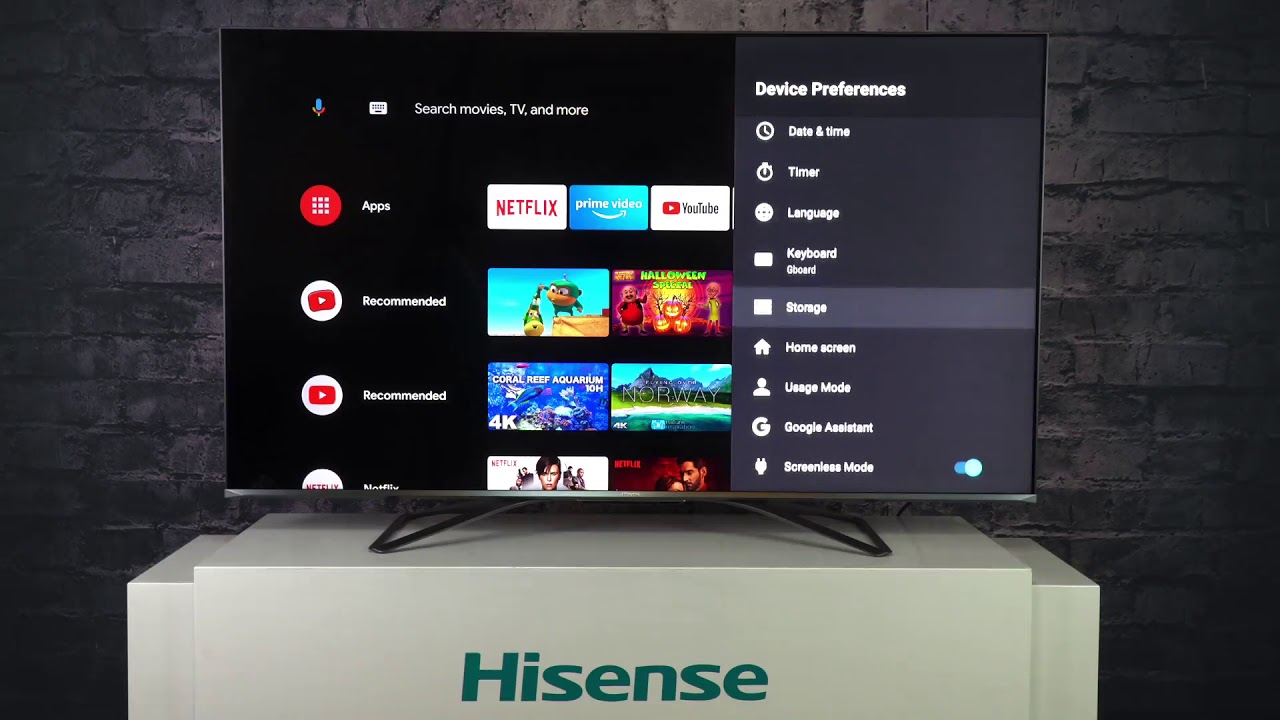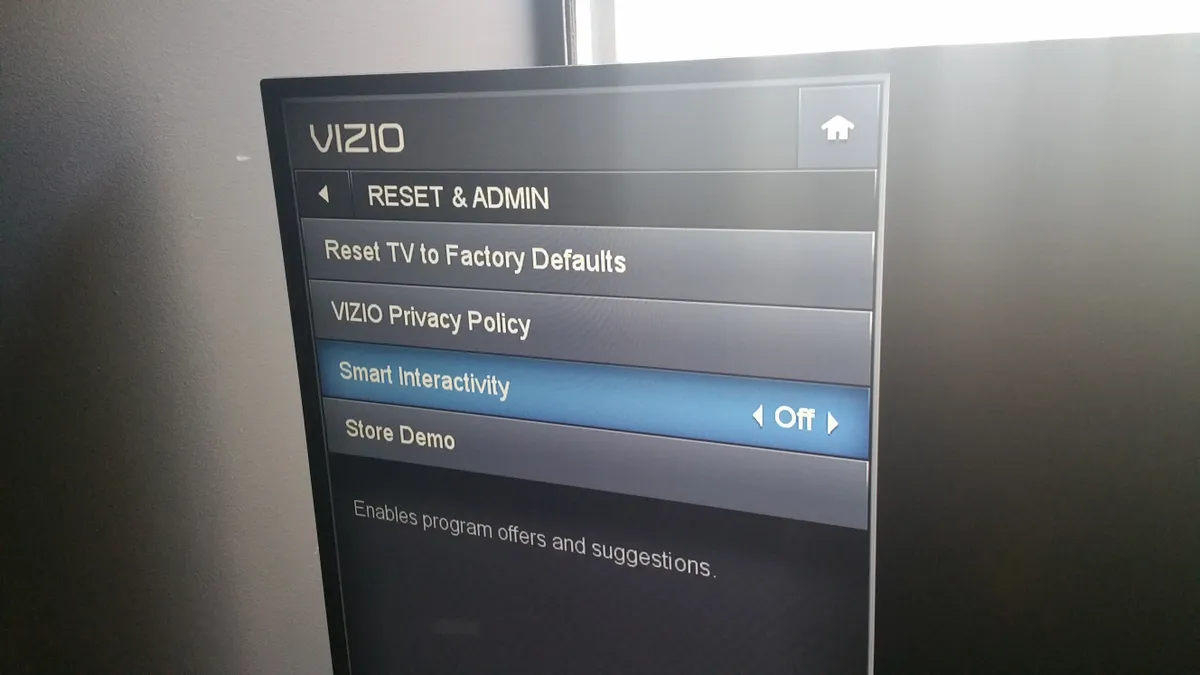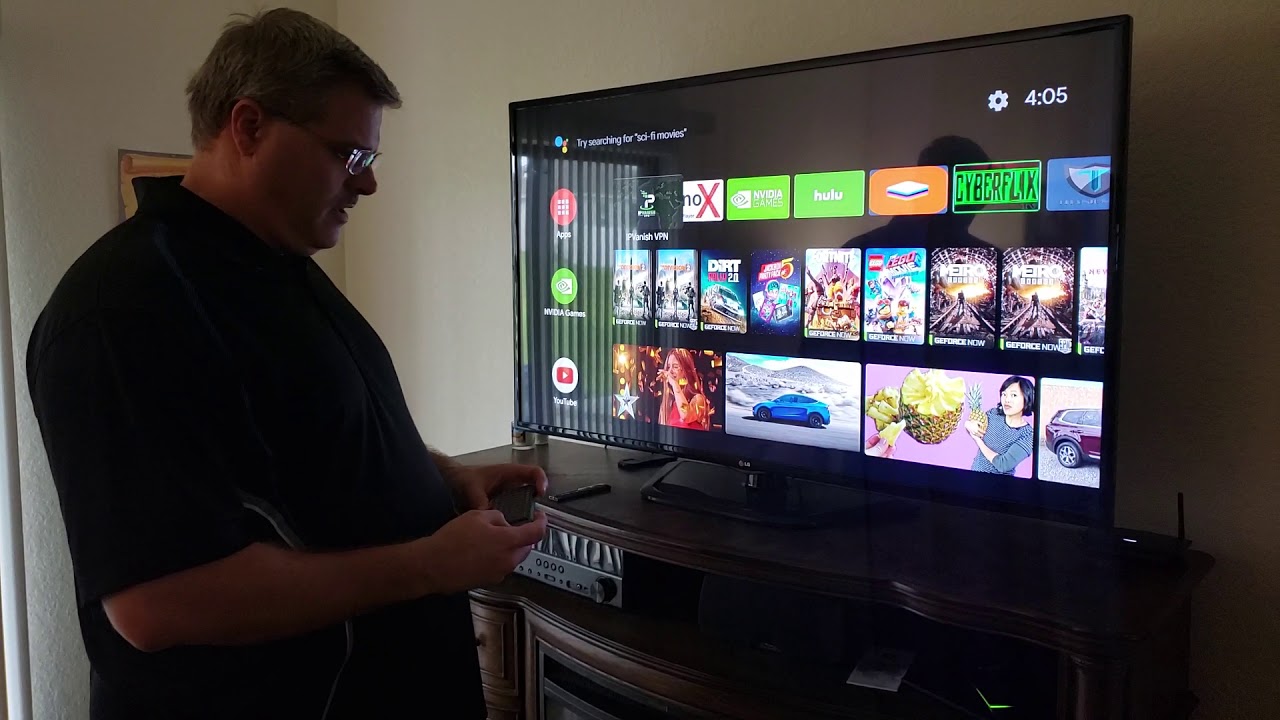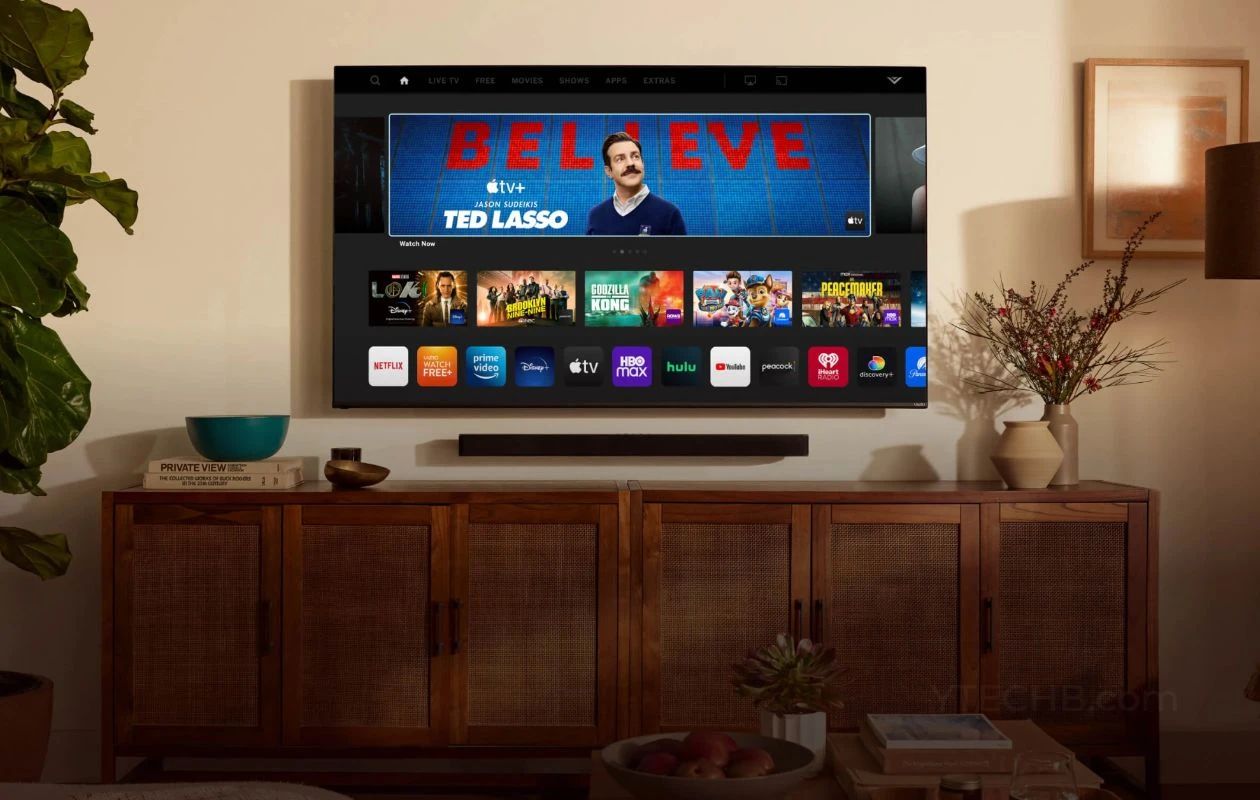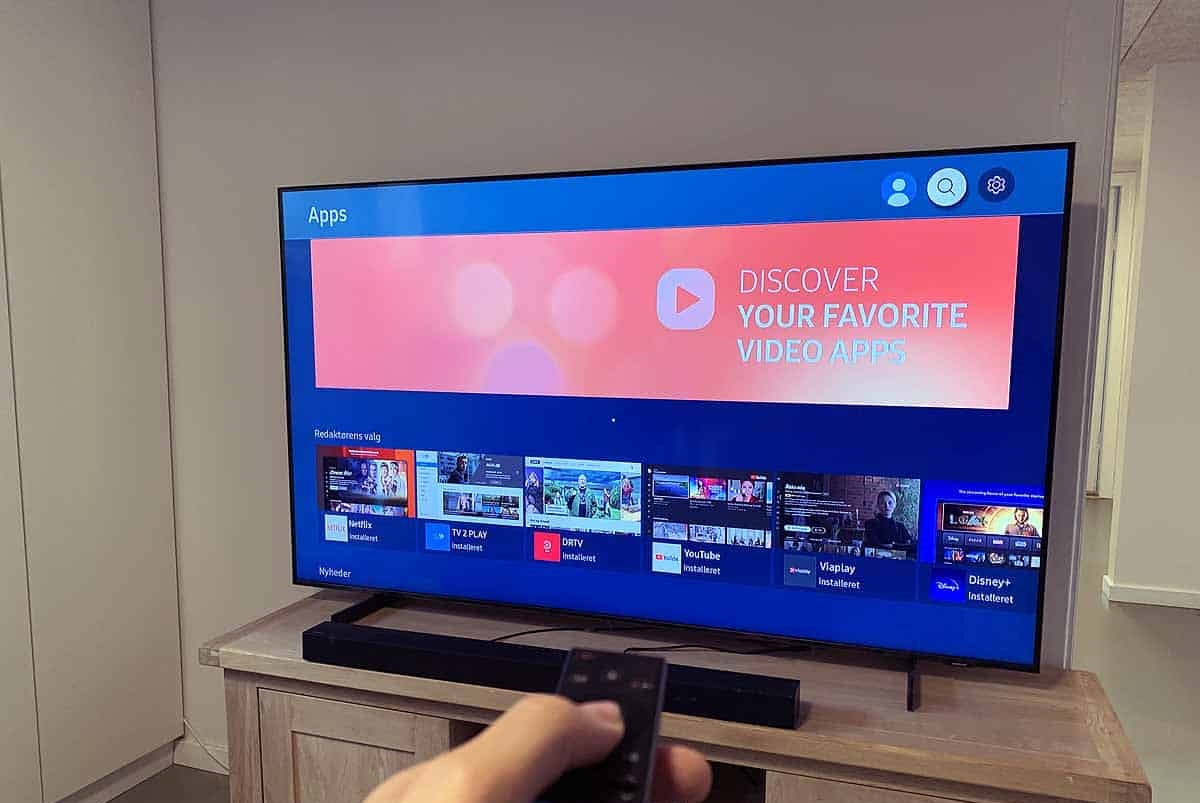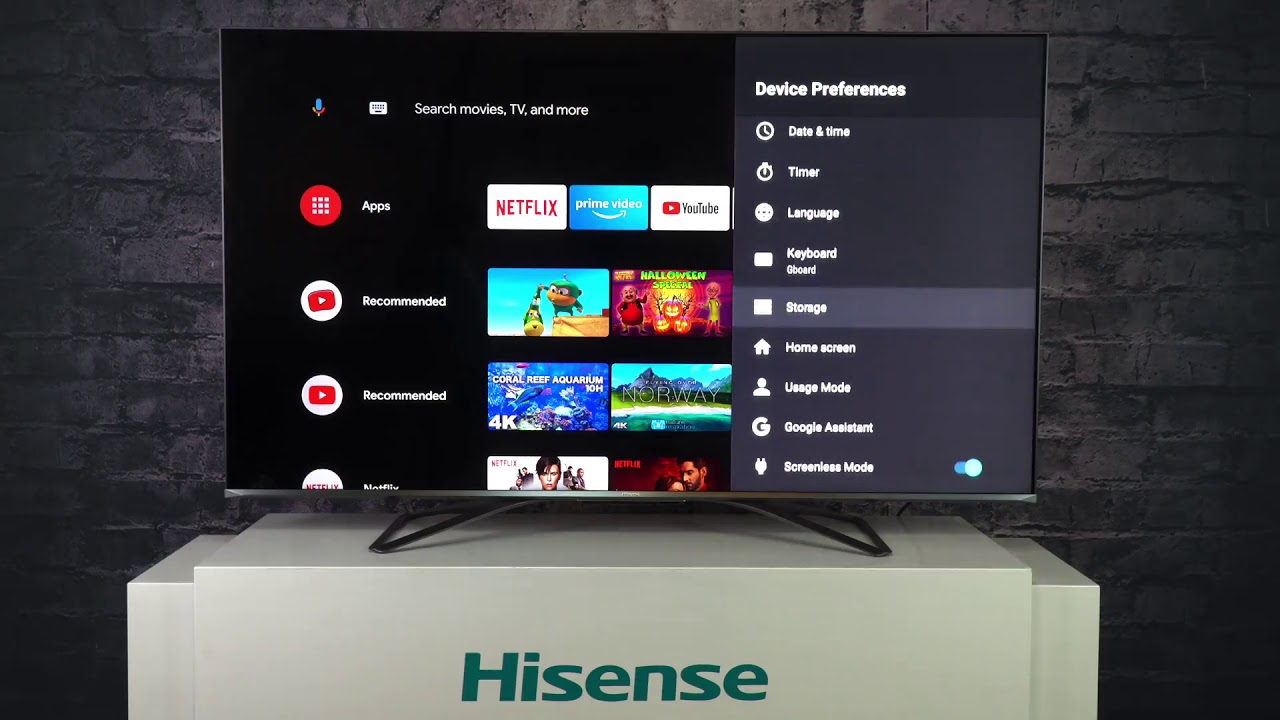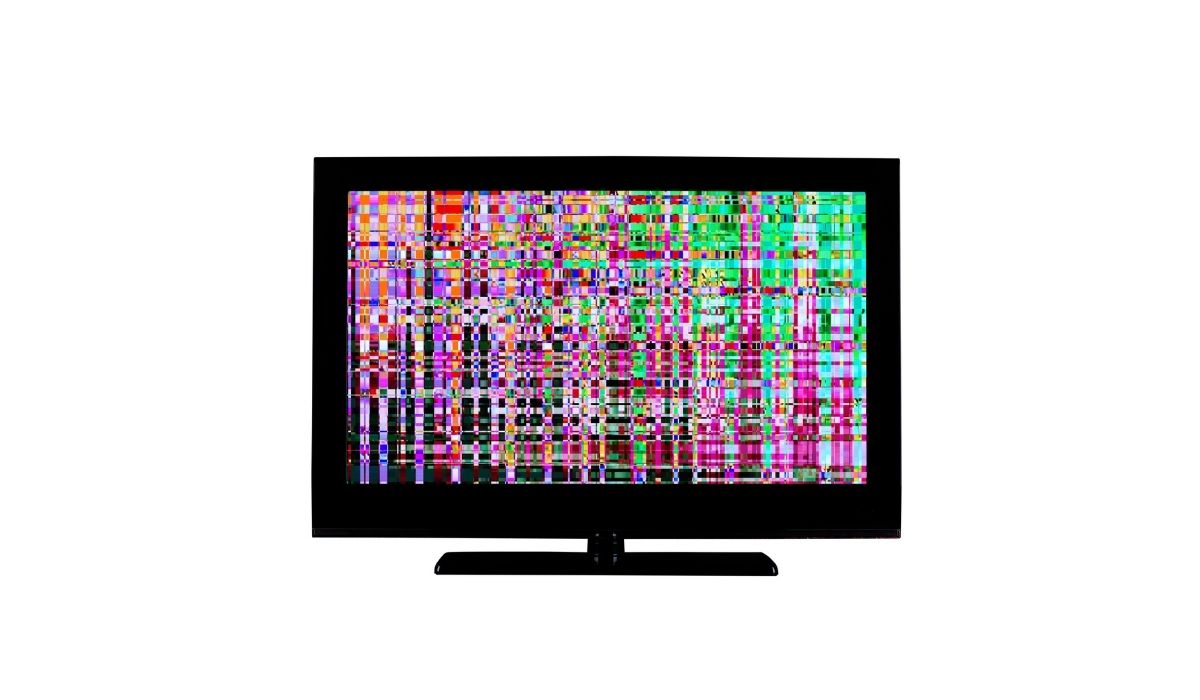Introduction
Have you experienced the frustration of your smart TV constantly freezing up? It’s a common problem that many users face, and it can be incredibly annoying when you’re in the middle of watching your favorite show or movie. But why does this happen? In this article, we will explore the possible reasons behind your smart TV freezing and provide you with some troubleshooting tips to help resolve the issue.
Smart TVs have become an essential part of our entertainment setup, allowing us to stream content, browse the internet, and access a wide range of apps and services. However, like any electronic device, they are not foolproof and can encounter occasional hiccups. Understanding the underlying causes of freezing will enable you to address the issue more effectively and ensure a seamless viewing experience.
There are several potential reasons for your smart TV freezing, ranging from insufficient memory and network issues to overheating and corrupted apps. It’s important to identify the specific cause affecting your device to implement the most appropriate solution.
In the following sections, we will delve deeper into each possible reason, providing you with a comprehensive understanding of what might be causing your smart TV to freeze. Additionally, we will share troubleshooting tips that can help rectify the problem and get your TV back to functioning smoothly.
Before we proceed, it’s important to note that the troubleshooting steps provided are general recommendations and may slightly vary depending on the make and model of your TV. Always refer to your device’s user manual or consult the manufacturer’s support website for specific instructions tailored to your smart TV.
Possible Reasons for Freezing
When your smart TV freezes, there can be several factors at play. Understanding these potential causes is crucial in resolving the issue. Let’s explore some common reasons why your smart TV may freeze:
1. Insufficient Memory: Smart TVs often have limited RAM and storage capacity. If you have multiple apps running in the background or have filled up the storage with downloaded content, it can lead to sluggish performance and freezing. Clearing up memory by closing unnecessary apps or deleting unused files can help alleviate this issue.
2. Network Issues: A weak or unstable internet connection can cause your smart TV to freeze when streaming content. Check your Wi-Fi signal strength and ensure that you are within range of the router. Additionally, verify that other connected devices are not hogging the bandwidth. If necessary, consider upgrading your internet plan or connecting your TV directly to the router via an Ethernet cable for a more stable connection.
3. Firmware Updates: Outdated firmware can lead to compatibility issues, resulting in freezing or other performance problems. Manufacturers frequently release firmware updates to enhance stability and address bugs. Make sure to regularly check for available updates and install them to keep your smart TV running smoothly.
4. Overheating: Smart TVs generate heat due to their internal components and continuous use. Over time, this heat can build up, leading to overheating and freezing. Ensure that your TV has proper ventilation and is not obstructed by objects that restrict airflow. You can also consider using external cooling fans or placing the TV in a well-ventilated area to prevent overheating.
5. Corrupted Apps: Certain apps installed on your smart TV may have bugs or glitches that cause freezing. If the freezing issue started after installing a specific app, try uninstalling it to see if the problem resolves. You can reinstall the app later or opt for an alternative from a trusted source.
Identifying the specific reason behind your smart TV freezing can help you troubleshoot and address the issue more effectively. In the following sections, we will provide you with troubleshooting tips to tackle these potential causes and get your TV back to normal functioning.
Insufficient Memory
One common reason for a smart TV to freeze is insufficient memory. Smart TVs typically have limited RAM and storage capacity, and when these resources are overwhelmed, it can lead to sluggish performance and freezing. Here are some steps you can take to address the issue:
1. Close unnecessary apps: Smart TVs often have multitasking capabilities, allowing you to run multiple apps simultaneously. However, running too many apps in the background can drain your device’s memory, causing it to freeze. To free up memory, navigate to the app switcher or task manager on your TV and close any apps that you’re not actively using.
2. Delete unused files: Over time, your smart TV’s storage can become cluttered with downloaded content, such as videos, photos, or apps that you no longer need. Removing these unused files can help free up storage space and improve overall system performance. Navigate to the settings menu on your TV and look for options to manage your storage or delete unnecessary files.
3. Move apps to external storage: Some smart TVs allow you to move certain apps from internal storage to external storage devices, such as USB drives or SD cards. If your TV supports this feature, consider moving apps that you don’t use frequently to external storage. This can help optimize your TV’s internal memory and reduce the chances of freezing.
4. Limit background processes: Smart TVs often run various background processes, such as system updates or app syncing, which can consume memory resources. Check your TV’s settings for options to limit or disable these background processes. Keep in mind that disabling certain processes may affect the automatic updating of apps and system software, so make sure to manually update your TV periodically.
5. Factory reset: If your smart TV continues to freeze despite freeing up memory, performing a factory reset may be necessary. This will restore your TV to its original settings, removing all installed apps, data, and personal preferences. Before proceeding with a factory reset, make sure to back up any important data or settings. The factory reset option can usually be found in the settings menu of your TV.
By following these steps, you can address the issue of insufficient memory on your smart TV, freeing up resources and reducing the likelihood of freezing. However, if the problem persists, it may be necessary to explore other potential causes and solutions.
Network Issues
A weak or unstable network connection can also contribute to your smart TV freezing. Streaming content requires a consistent and reliable internet connection, and when the connection is compromised, it can lead to buffering issues and freezing. Here are some steps you can take to address network-related problems:
1. Check your Wi-Fi signal: Ensure that your smart TV is within range of your Wi-Fi router. Walls, furniture, and other objects can interfere with the signal strength. If your TV is far from the router, consider moving it closer or using Wi-Fi range extenders to boost the signal. You can also try repositioning your Wi-Fi router to achieve better coverage throughout your home.
2. Reduce interference: Other electronic devices in your home, such as cordless phones, microwave ovens, or even neighboring Wi-Fi networks, can cause signal interference and impact the performance of your network. Try relocating or turning off these devices to minimize potential interference and improve connection stability.
3. Bandwidth allocation: If other devices connected to your network are consuming a significant amount of bandwidth, it can affect the streaming quality on your smart TV. Consider prioritizing the network bandwidth for your TV by limiting the usage or disconnecting other devices that aren’t in use.
4. Connect via Ethernet: If possible, connect your smart TV directly to your router using an Ethernet cable. Wired connections tend to be more reliable and stable compared to wireless connections, minimizing the chances of network-related freezing or buffering issues.
5. Check your internet speed: Slow internet speeds can also contribute to freezing or buffering problems. It’s worth checking your internet speed using online speed test websites or dedicated apps on your smart TV. If the speed is significantly lower than your expected connection speed, contact your internet service provider to address the issue.
6. Update router firmware: Just like your smart TV’s firmware, your Wi-Fi router’s firmware may also require updates to improve performance and fix bugs. Visit your router manufacturer’s website for instructions on how to check for and install the latest firmware updates.
By addressing network-related issues, you can enhance the stability and reliability of your smart TV’s internet connection, reducing the chances of freezing during streaming. If these steps do not resolve the problem, it may be necessary to explore other potential causes and solutions.
Firmware Updates
Outdated firmware can contribute to freezing and performance issues on your smart TV. Manufacturers regularly release firmware updates to improve system stability, add new features, and fix bugs. Here’s what you need to know:
1. Check for updates: Most smart TVs have a built-in system for checking and installing firmware updates. Navigate to the settings menu on your TV and look for an option like “Software Update” or “Firmware Update.” Select this option to check if any updates are available for your TV.
2. Automatic updates: Some smart TVs offer the convenience of automatic firmware updates. This means that the TV will check for updates and install them in the background, without requiring any manual intervention. Make sure this feature is enabled in your TV’s settings to ensure you always have the latest firmware version.
3. Internet connectivity: To download and install firmware updates, your smart TV needs to be connected to the internet. Ensure that your TV is connected to a stable network with sufficient internet bandwidth. If you’re experiencing network issues, address them first to ensure a successful update process.
4. Read release notes: Before installing firmware updates, it’s a good practice to read the release notes or changelog provided by the manufacturer. This will give you insights into what improvements or fixes the update brings. If the update addresses known freezing or performance issues, it’s highly recommended to install it.
5. Follow instructions: When installing firmware updates, carefully follow the on-screen instructions provided by your TV. This typically involves accepting the update, allowing your TV to restart and apply the new firmware. Do not power off your TV or disconnect it from the power source during the update process, as this can cause irreparable damage.
6. Contact manufacturer support: If you encounter any difficulties during the firmware update process or if the freezing issues persist even after updating, it’s advisable to contact the manufacturer’s support team for assistance. They can provide further guidance and troubleshooting specific to your TV model.
Keeping your smart TV’s firmware up to date is essential for optimal performance, stability, and compatibility with the latest apps and streaming services. By regularly checking for and installing firmware updates, you can ensure a smoother and more enjoyable viewing experience on your smart TV.
Overheating
Overheating is a common issue that can cause your smart TV to freeze. Smart TVs generate heat as a result of their internal components working continuously. When the heat is not effectively dissipated, it can lead to performance problems and freezing. Here are some steps you can take to address overheating:
1. Ensure proper ventilation: Check that your smart TV has sufficient space around it for proper airflow. Avoid placing it in enclosed spaces or against walls that can obstruct ventilation. Clear any obstructions or objects blocking the vents on the TV to facilitate better heat dissipation.
2. Remove external heat sources: Keep your smart TV away from sources of heat, such as direct sunlight, fireplaces, or heating vents. These external heat sources can increase the overall temperature in the vicinity of the TV, leading to overheating.
3. Use external cooling fans: Consider using external cooling fans specifically designed for electronics. These fans can help improve airflow and dissipate heat from your TV’s components more effectively. Place the cooling fan behind or next to your smart TV to facilitate better heat dissipation.
4. Optimize settings for energy efficiency: Some smart TVs offer power-saving or energy-efficient modes that can help reduce heat generation. Explore your TV’s settings menu and enable any energy-saving features that may be available. This can lower the overall operating temperature of your TV and minimize the chances of overheating.
5. Limit usage time: Smart TVs are designed to operate continuously, but extended usage without breaks can lead to overheating. If you notice your TV getting warmer after several hours of continuous use, consider giving it a rest. Take occasional breaks while binge-watching or playing video games to allow the TV to cool down.
6. Contact manufacturer support: If your smart TV continues to overheat and freeze despite following the above steps, it’s advisable to seek assistance from the manufacturer’s support team. They can provide additional guidance, troubleshooting steps specific to your TV model, or recommend further actions to address the overheating issue.
By taking preventive measures to address overheating, you can ensure that your smart TV operates within safe temperature limits. This helps in maintaining optimal performance and minimizing the risk of freezing or other performance issues caused by overheating.
Corrupted Apps
A potential reason for your smart TV freezing is the presence of corrupted apps. These are applications on your TV that may have bugs, glitches, or compatibility issues, leading to freezing or poor performance. Here are some steps you can take to address this issue:
1. Identify the problematic app: If you notice that freezing issues occur specifically when using a particular app, it’s likely that the app itself is causing the problem. Take note of the app in question and proceed with troubleshooting steps targeted at that specific app.
2. Update or reinstall the app: Check if there are any available updates for the app in question. Manufacturers regularly release updates to fix bugs and improve performance. If an update is available, install it and see if it resolves the freezing issue. If an update doesn’t fix the problem, consider uninstalling and reinstalling the app entirely.
3. Check for alternative apps: If a specific app continues to cause freezing issues, explore other apps that provide similar functionality. Visit your smart TV’s app store or browse reputable third-party app sources to find alternative apps that can fulfill your streaming or entertainment needs without freezing your TV.
4. Clear cache and data: Apps accumulate cache files and data over time, and these files can sometimes become corrupted, leading to freezing issues. Clearing the cache and data for a particular app can help resolve freezing problems. Navigate to the app settings on your smart TV and locate the option to clear cache and data. Keep in mind that clearing data will reset the app’s settings and preferences.
5. Perform a system update: Occasionally, freezing issues caused by corrupted apps can be resolved by performing a system update on your smart TV. A system update not only updates the firmware but also addresses app-related issues and improves performance. Check for system updates in your TV’s settings menu and install any available updates.
6. Factory reset: If all else fails, performing a factory reset may be necessary. This will remove all installed apps, data, and personal settings from your smart TV. While this step should be a last resort, it can help eliminate any lingering issues caused by corrupted apps. Ensure to back up any important data or settings before proceeding with a factory reset.
By addressing corrupted apps, you can improve the overall performance and stability of your smart TV. If the freezing issues persist, as a last resort, consult the manufacturer’s support team for further assistance.
Troubleshooting Tips
When your smart TV freezes, following some troubleshooting tips can help you identify and resolve the issue. Here are some general steps you can take to troubleshoot freezing problems on your smart TV:
1. Clear cache and data: Clearing the cache and data of your apps can often resolve freezing issues. Navigate to the app settings on your TV and look for options to clear cache and data. Keep in mind that clearing data will reset app settings and preferences, so make note of any customizations you may need to reconfigure.
2. Restart your smart TV: A simple restart can sometimes resolve freezing problems. Power off your TV, unplug it from the power source, and wait for a couple of minutes. Then, plug it back in and power it on. This action clears temporary files and refreshes the TV’s system, potentially fixing any minor issues.
3. Update firmware: Ensure that your smart TV’s firmware is up to date. Manufacturers regularly release firmware updates that address performance issues and improve system stability. Navigate to the settings menu on your TV and check for available firmware updates. Follow the on-screen prompts to install any updates.
4. Check network connection: Poor or unstable network connections can cause freezing when streaming content on your smart TV. Verify that your TV is connected to a stable Wi-Fi network with sufficient internet bandwidth. If possible, try connecting your TV to the router using an Ethernet cable for a more reliable connection.
5. Reset to factory settings: If the freezing issue persists despite trying other troubleshooting steps, a factory reset may be necessary. This will restore your smart TV to its original settings, removing all apps, data, and personal preferences. Refer to your TV’s user manual or the manufacturer’s website for instructions on how to perform a factory reset.
6. Contact manufacturer support: If the freezing problem persists or if none of the troubleshooting steps have resolved the issue, it’s recommended to contact the manufacturer’s support team. They can provide you with further guidance, offer specific solutions for your TV model, or recommend professional assistance if needed.
Remember, the above troubleshooting tips are general recommendations and may vary depending on your smart TV’s make and model. Always refer to your TV’s user manual or contact the manufacturer’s support for specific instructions tailored to your device.
By following these troubleshooting tips, you can effectively diagnose and resolve freezing issues on your smart TV, ensuring a smoother and uninterrupted viewing experience.
Clear Cache and Data
Clearing the cache and data of your apps can be an effective method to resolve freezing issues on your smart TV. Over time, apps accumulate temporary files and data that can become corrupted or cause conflicts, leading to performance problems. Here’s how you can clear the cache and data on your smart TV:
1. Navigate to the app settings: On your smart TV, go to the settings menu and find the option for app settings. This may be listed as “Apps,” “Application Manager,” or something similar, depending on your TV’s manufacturer and operating system.
2. Select the specific app: In the app settings menu, you will find a list of installed apps. Identify the app that is freezing or causing performance issues and select it to access its individual settings and options.
3. Clear the app cache: Within the app settings, you should find an option to clear the app’s cache. This will remove the temporary files stored by the app, which can sometimes become corrupted and affect its performance. Select the “Clear Cache” option to initiate the process.
4. Clear the app data: In addition to clearing the app’s cache, you may also have the option to clear the app’s data. Keep in mind that clearing the data will reset the app to its initial state, removing any personalized settings, preferences, or logged-in accounts. If you are willing to reset the app, select the “Clear Data” option.
5. Restart the app: After clearing the cache and data, exit the app settings and relaunch the app. This will initiate a fresh start of the app, free from any corrupted files or conflicts that may have been causing the freezing issues.
6. Repeat for other problematic apps: If you have multiple apps that are freezing or experiencing performance problems, repeat the above steps for each affected app. Clearing the cache and data for all problematic apps can help ensure a smoother and more stable experience on your smart TV.
Note that clearing app cache and data may temporarily impact your personalized settings, as they will be reset to default. You may need to reconfigure any customizations or sign in to your accounts again after clearing the data.
Clearing cache and data is a useful troubleshooting step to address freezing issues caused by corrupted files or conflicting data on your smart TV. However, if the freezing problems persist, it may be necessary to explore other potential causes and solutions.
Restart Smart TV
Restarting your smart TV is a simple but effective troubleshooting step to resolve freezing issues. It can help clear temporary files, refresh the system, and resolve minor software glitches that may be causing the freezing problem. Here’s how you can restart your smart TV:
1. Power off your TV: Locate the power button on your smart TV or use the remote control to turn off the TV. If you’re using the remote control, look for a dedicated power button or a power icon.
2. Unplug the TV from the power source: Once the TV is powered off, unplug it from the electrical outlet. Leave it unplugged for at least 1-2 minutes. This will allow any residual power to dissipate and ensure a complete system reset.
3. Wait a few minutes: While the TV is unplugged, take this time to relax and give the TV a chance to cool down. This is particularly important if your TV has been running for an extended period or if overheating may have contributed to the freezing issue.
4. Plug the TV back in: After a few minutes, plug your smart TV back into the power source. Ensure that it is properly connected and the power outlet is functioning correctly. Use a stable power source to avoid any electrical issues.
5. Power on your TV: Once the TV is plugged in, use the power button on the TV or the remote control to turn it back on. The TV will go through its usual startup process, and you should see the manufacturer’s logo or the TV’s home screen.
6. Test for freezing issues: After the restart, use your smart TV as you normally would and monitor if the freezing problem persists. Check if the freezing occurs with specific apps or during certain activities. If the freezing issue is resolved, proceed with caution and keep an eye on any recurring problems in the future.
Restarting your smart TV can help resolve freezing issues caused by temporary system glitches or unresponsive apps. It is a simple and non-intrusive troubleshooting step that can be performed without any risk to your personal data.
If the freezing problem persists even after restarting your TV, it may be necessary to explore other potential causes and solutions to address the issue.
Update Firmware
Keeping your smart TV’s firmware up to date is crucial for optimal performance and stability. Manufacturers regularly release firmware updates that address bugs, improve system functionality, and enhance security. Updating the firmware can often resolve freezing issues on your smart TV. Here’s how you can update the firmware:
1. Check for available updates: Navigate to the settings menu of your smart TV. Look for an option labeled “Software Update,” “Firmware Update,” or something similar. Select this option to check for any available updates for your TV’s firmware.
2. Connect to the internet: To download and install the firmware updates, your smart TV needs to be connected to the internet. Ensure that your TV is connected to a stable Wi-Fi network with a reliable internet connection.
3. Install the updates: If there are available firmware updates, follow the on-screen prompts to install them. Depending on your TV model, you may have the option to install updates automatically or manually. Choose the appropriate method and allow the TV to download and install the firmware updates.
4. Do not interrupt the update: During the firmware update process, it is crucial not to power off the TV or disconnect it from the power source. Interrupting the update can lead to system instability or even permanent damage to your TV. Stay patient and let the update complete.
5. Restart your TV: After the firmware update is complete, it is a good practice to restart your smart TV. Power off the TV, unplug it from the power source for a few seconds, and then plug it back in. This will ensure that the new firmware is properly applied and activated.
6. Test for freezing issues: Once the firmware update is complete and your TV has been restarted, use it as usual and monitor if the freezing issue persists. Check if the freezing occurs with specific apps or during certain activities. If the freezing problem is resolved, you can continue using your smart TV with an updated firmware.
Regularly checking for and installing firmware updates is essential to keep your smart TV functioning optimally. It ensures that your TV has the latest features, improvements, and bug fixes provided by the manufacturer.
If the freezing problem persists even after updating the firmware, it may be necessary to explore other potential causes and solutions to address the issue.
Check Network Connection
A stable and reliable network connection is crucial for smooth streaming and to avoid freezing issues on your smart TV. If you are experiencing freezing problems, it’s important to check your network connection. Here are some steps to help you troubleshoot network-related issues:
1. Verify Wi-Fi signal strength: Check the signal strength of your Wi-Fi network. If your smart TV is far from the router or if there are obstacles such as walls and furniture in the way, the signal strength may be weakened. Consider repositioning the router or using Wi-Fi range extenders to improve the signal coverage near your TV.
2. Restart your router: Sometimes, network issues can be resolved by simply restarting your router. Power off your router by unplugging it from the power source, wait for a few seconds, and then plug it back in. Allow the router to restart and establish a fresh connection.
3. Check for interference: Other electronic devices, such as cordless phones, microwave ovens, or even neighboring Wi-Fi networks, can interfere with your Wi-Fi signal. Keep these devices away from your router or smart TV to minimize interference and improve the overall network performance.
4. Limit bandwidth usage: Excessive bandwidth usage from other devices on your network can impact the streaming quality and cause freezing on your smart TV. Ensure that other devices connected to your network are not consuming the majority of the available bandwidth. You may consider pausing downloads or disconnecting devices that are not in use.
5. Check for firmware updates: Firmware updates for your router can improve its performance and address network-related issues. Visit the manufacturer’s website to check for available updates and follow their instructions to install them if necessary.
6. Connect via Ethernet: If your smart TV supports it, consider connecting it directly to the router using an Ethernet cable. Wired connections provide a more stable and reliable network connection, reducing the chances of freezing or buffering problems.
7. Test internet speed: Use online speed test websites or dedicated apps on your smart TV to check your internet speed. If the speed is significantly lower than your expected connection speed, reach out to your internet service provider (ISP) for assistance in resolving the issue.
By checking and troubleshooting your network connection, you can ensure a stable connection and minimize freezing issues on your smart TV. If the freezing problem persists, you may need to explore other potential causes and solutions to address the issue.
Reset to Factory Settings
If you’ve exhausted other troubleshooting options and your smart TV continues to experience freezing issues, resetting it to factory settings may help. Resetting your TV will restore it to its original settings, removing all personal preferences, apps, and data. Here’s how you can reset your smart TV:
1. Backup important data: Before resetting your TV, make sure to back up any important data or settings that you want to keep. This may include personalized app configurations, network settings, or any other data that you don’t want to lose.
2. Locate the reset option: The process to reset your TV to factory settings may vary based on the manufacturer and model. Refer to your TV’s user manual or visit the manufacturer’s support website to find instructions for your specific TV.
3. Access the settings menu: Typically, the reset option can be found in the settings menu of your smart TV. Navigate to the settings menu and look for an option like “System,” “General,” or “Reset.” Select this option to initiate the reset process.
4. Confirm the reset: Before proceeding with the reset, the TV will prompt you to confirm your decision. Read the on-screen instructions carefully, as resetting to factory settings will erase all data and restore the TV to its original state.
5. Reset your TV: Once you’ve confirmed the reset, the TV will begin the process. It may take a few minutes for the reset to complete. Avoid turning off the TV or disconnecting it from the power source during this process, as it can cause damage or interrupt the reset process.
6. Set up your TV: After the reset is complete, your smart TV will restart and prompt you to set it up again, just like when you first bought it. Follow the on-screen instructions to configure your TV’s language, network connection, and other initial settings. You can then reinstall your apps and personalize your TV as desired.
Note: Resetting your TV to factory settings should be used as a last resort if all other troubleshooting steps have failed to resolve the freezing issue. It is essential to understand that resetting will erase all data, settings, and apps on your TV.
By resetting your smart TV to factory settings, you can eliminate any software issues or corrupted settings that may be causing freezing problems. If the freezing issue persists even after the reset, it may be necessary to contact the manufacturer’s support team for further assistance.
Conclusion
Experiencing freezing issues on your smart TV can be frustrating, but there are several steps you can take to pinpoint the problem and resolve it. By understanding the potential causes and implementing the appropriate troubleshooting techniques, you can restore the smooth and enjoyable viewing experience on your smart TV.
In this article, we explored various possible reasons behind smart TV freezing, including insufficient memory, network issues, outdated firmware, overheating, and corrupted apps. We provided troubleshooting tips such as clearing cache and data, restarting the TV, updating firmware, checking the network connection, and resetting to factory settings.
Remember to consult your smart TV’s user manual or the manufacturer’s support website for specific instructions tailored to your TV model. Additionally, pay attention to any safety precautions while performing troubleshooting steps, such as not interrupting firmware updates or being cautious with a factory reset.
If the freezing issue persists despite your troubleshooting efforts, it may be beneficial to contact the manufacturer’s support team for further assistance. They can provide specialized guidance or recommend professional help if needed.
By following the troubleshooting tips in this article, you can address freezing issues on your smart TV and ensure a seamless and uninterrupted viewing experience. Regular maintenance and staying updated with firmware and app updates can also contribute to long-term optimal performance. Enjoy your entertainment without the frustration of freezing!







